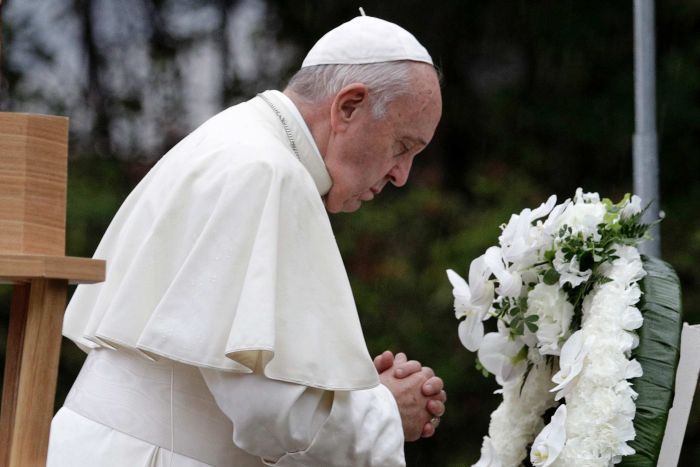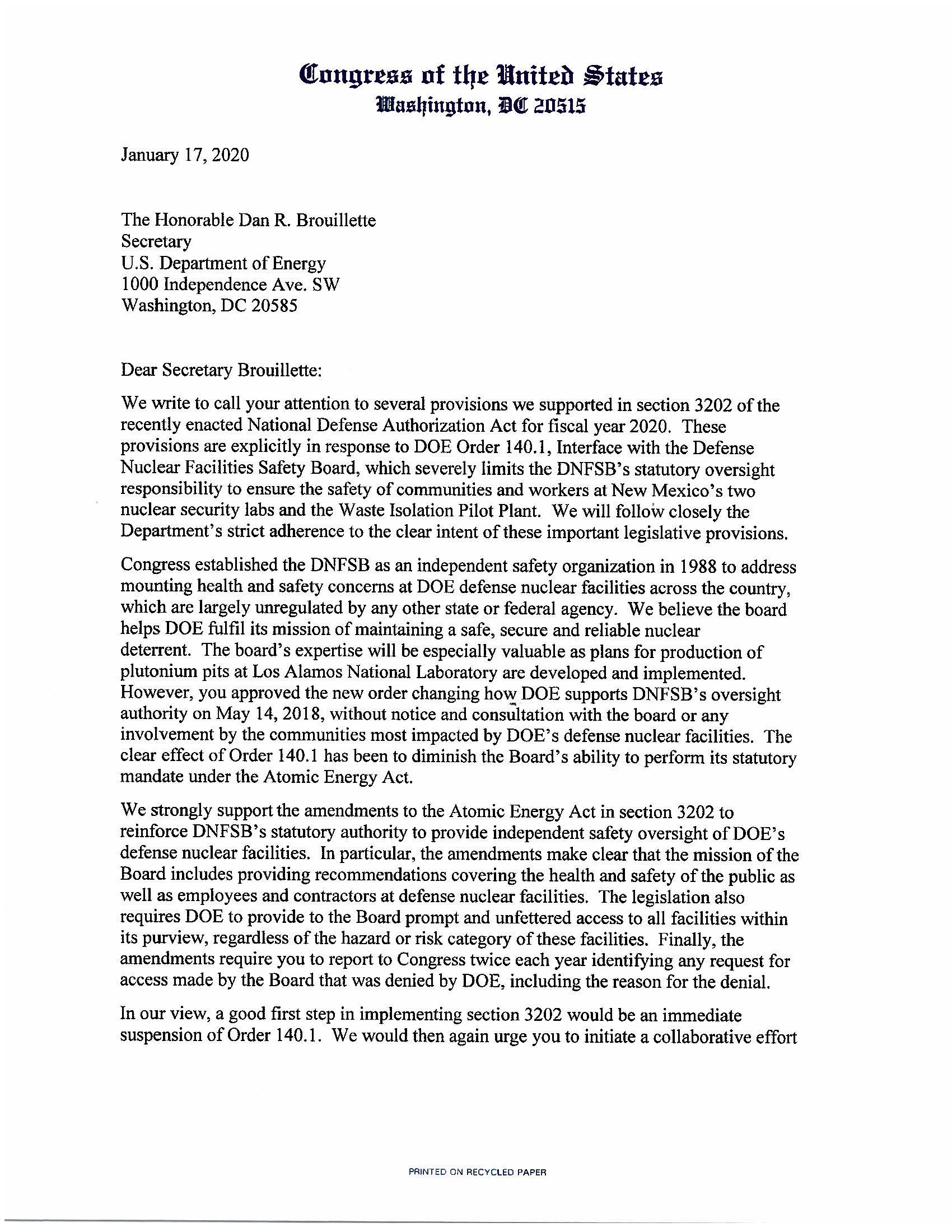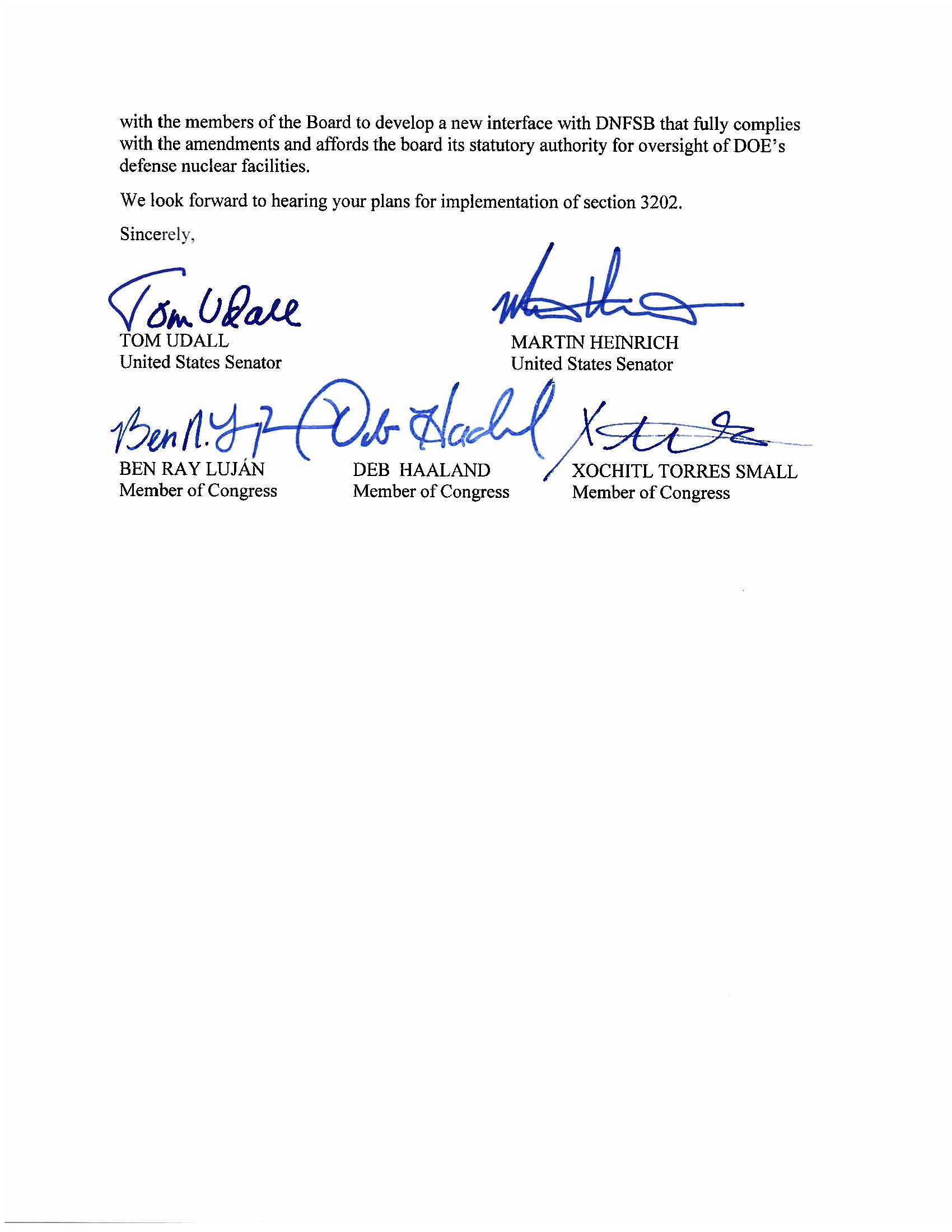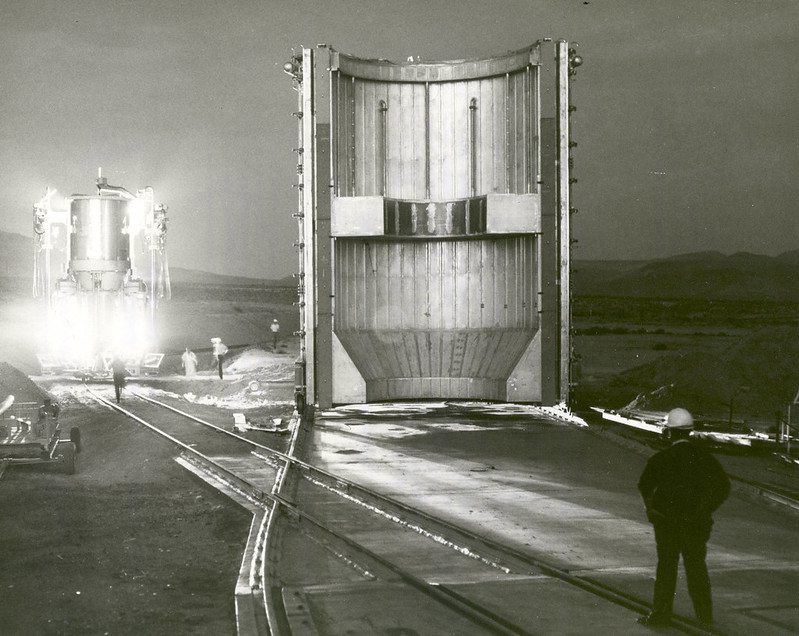2020
U.S. Has Deployed New, Small Nukes On Submarine, According To Group
BY: GEOFF BRUMFIEL | npr.org
The U.S. has begun deploying a new type of low-yield nuclear warhead aboard some ballistic missile submarines, according to a report by an independent monitor.
When the USS Tennessee, an Ohio-class submarine, went on patrol in the final weeks of 2019, it carried “one or two” of the new weapons, according to a post by the Federation of American Scientists.
“It is apparently still out there now and expected to come back sometime in February,” says Hans Kristensen, director of the group’s nuclear information project. He believes a second submarine carrying the weapon may also be patrolling in the Pacific.
Kristensen says the assessment is based on conversations with government officials, who have spoken to the group about the weapon’s deployment.
The Pentagon officially declined to comment on the report: “It is U.S. policy to neither confirm nor deny the presence or absence of nuclear weapons at any general or specific location, as such, we cannot confirm or deny this reporting at this time,” it said in a written statement to NPR.
Experts Call for Firm Age Limit on Plutonium Weapons
What’s the lifespan of a nuke’s “pit” anyway?
BY: JOE GOULD | defensenews.com
- Experts are pleading with Congress to get a firm age limit on plutonium cores of U.S. nuclear weapons.
- A specific plutonium isotope powers nuclear weapons, but others power nuclear plants and space travel.
- The Trump administration wants to begin replacing cores, but a more scientific time frame could save a lot of “rush” money.
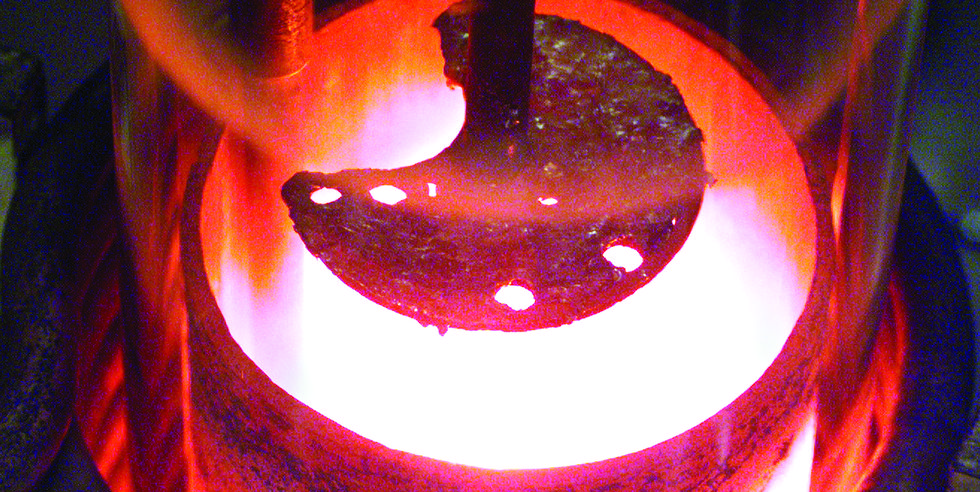
The U.S. has nearly 4,000 stockpiled nuclear weapons, and Scientific American wonders what will happen to all of their aging plutonium cores. Experts have said the plutonium will last at least 100 years, but it’s probably still smart to make backup plans—and the Trump administration is doing just that, with aims to replace all the cores by 2080.
US Deploys New Low-Yield Nuclear Submarine Warhead
The US Navy has now deployed the new W76-2 low-yield Trident submarine warhead.
BY: WILLIAM M. ARKIN & HANS M. KRISTENSEN | fas.org
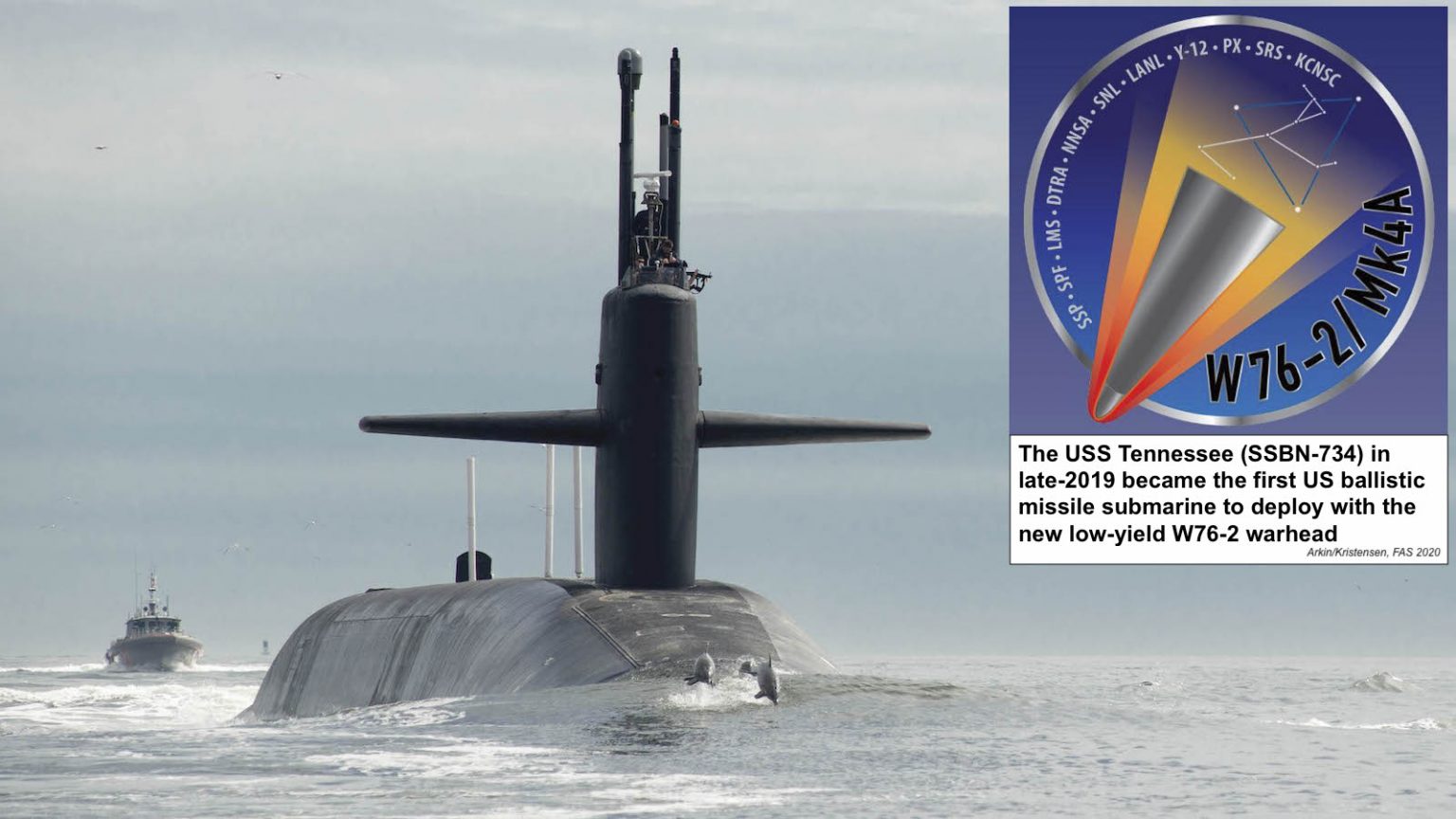
The first ballistic missile submarine scheduled to deploy with the new warhead was the USS Tennessee (SSBN-734), which deployed from Kings Bay Submarine Base in Georgia during the final weeks of 2019 for a deterrent patrol in the Atlantic Ocean.
The W76-2 warhead was first announced in the Trump administration’s Nuclear Posture Review (NPR) unveiled in February 2018. There, it was described as a capability to “help counter any mistaken perception of an exploitable ‘gap’ in U.S. regional deterrence capabilities,” a reference to Russia. The justification voiced by the administration was that the United States did not have a “prompt” and useable nuclear capability that could counter – and thus deter – Russian use of its own tactical nuclear capabilities.
Iran’s impending exit from the NPT: A new nuclear crisis
“What would an Iranian NPT withdrawal look like? It would spell the end of all IAEA inspections of Iran’s nuclear facilities and the dawn of a new era of complete lack of transparency on Iran’s nuclear activities…Without a doubt, Iran’s NPT exit would represent a severe blow to the global nonproliferation regime, irrespective of Iran’s stated intentions.”
BY: KAVEH L. AFRASIABI & NADER ENTESSAR | thebulletin.org
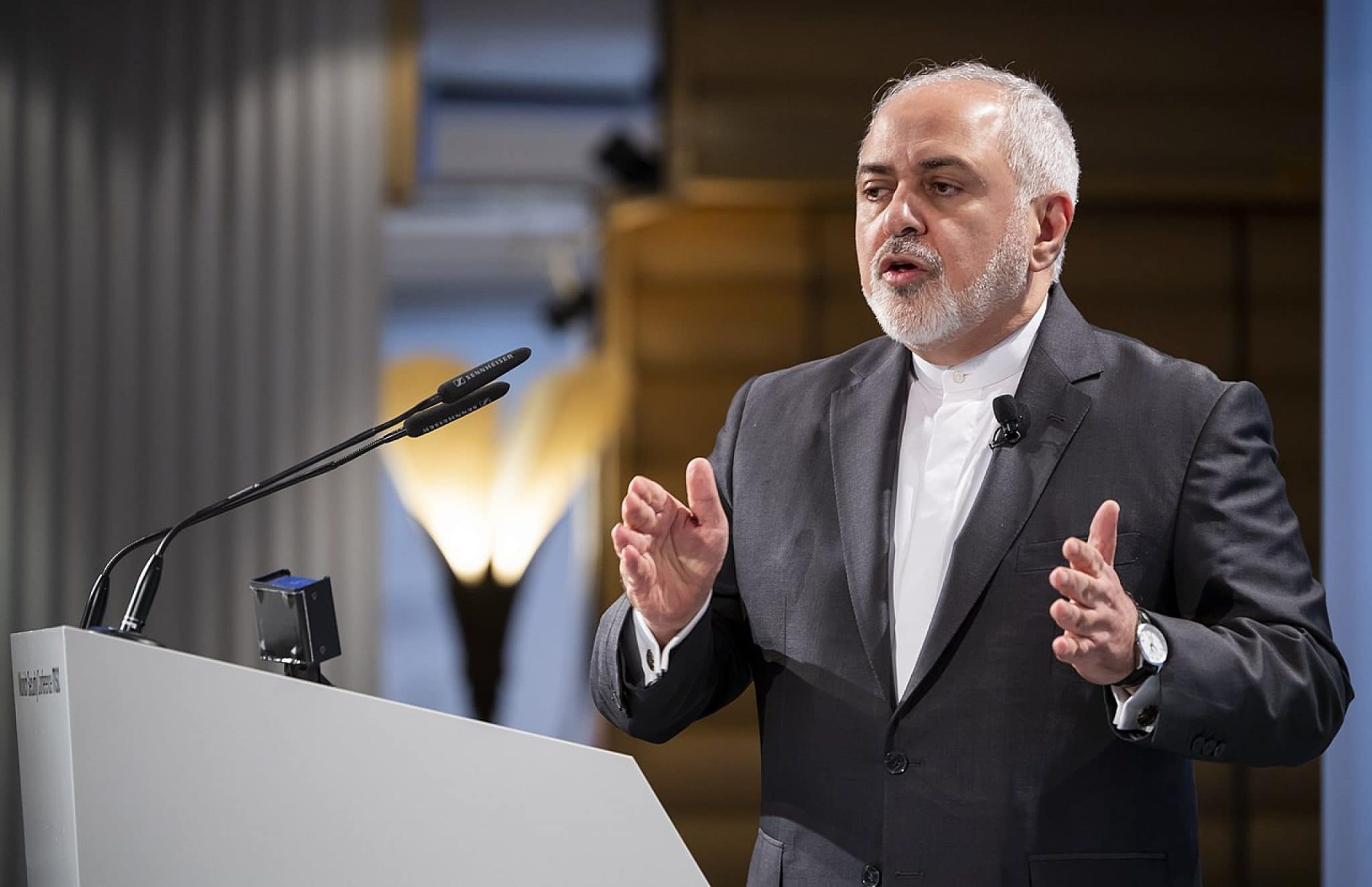
By all accounts, the approaching 2020 Nuclear Non-Proliferation Treaty (NPT) conference will have to address new challenges on both the disarmament and nonproliferation fronts. These range from the failure of nuclear weapons states to disarm as the treaty requires to the collapse of the Intermediate-Range Nuclear Forces (INF) Treaty, the uncertainties surrounding the future of New START after its expiration in early 2021, North Korea’s relentless nuclearization, and Iran’s repeated explicit threats to quit the NPT ever since the United States withdrew from the 2015 nuclear deal in May 2018. Taken as a whole, these developments represent a big leap backward, imperiling international peace and security. Coinciding with the 75th anniversary of the Hiroshima and Nagasaki nuclear bombings, the upcoming NPT conference is a unique opportunity to address the root causes of the NPT’s “new crisis” and to map out prudent steps toward crisis prevention, particularly in the volatile Middle East.
Trump’s Latest Attack on the Environment May Be His Most Alarming Yet
“New rules will eliminate consideration of climate change in environmental impact reports; limit the scope of projects that trigger NEPA, allowing companies to conduct their own reviews; implement hard deadlines on environmental reviews and possibly marginalize public input on projects.”
BY: SHARON ZHANG | truthout.org
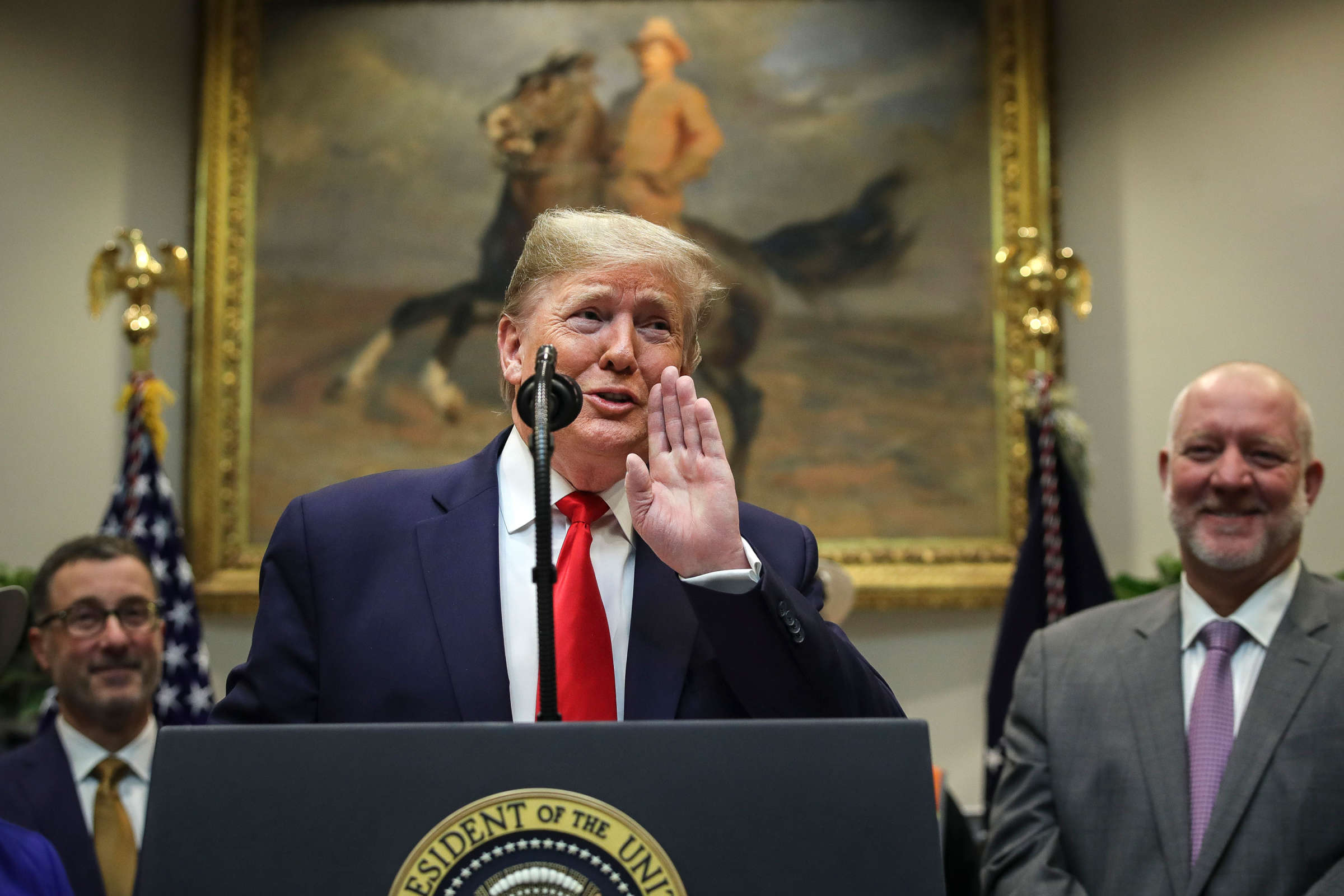
Early this month, the Trump administration released planned major changes to the National Environmental Policy Act (NEPA), the oldest environmental law in the U.S. The debate over NEPA is, like most other environmental debates in the U.S., a debate between people representing industry interests and people interested in protecting communities and the environment. And recently, the fossil fuel industry has helped push through another potential win against the law — and this one could have major consequences.
President Donald Trump has shown his hand in this debate many times — he’s continually on the side of corporations, which is unsurprising considering he, himself, is a businessman. Trump has rolled back or begun rolling back 95 environmental regulations as of December. He has been fixated on allowing the building of pipelines. This line of policy has come to a head with his administration’s recent proposal to roll back NEPA, the nation’s oldest environmental law.
The low-yield nuclear warhead: A dangerous weapon based on bad strategic thinking
BY: ANDREW FACINI | thebulletin.org
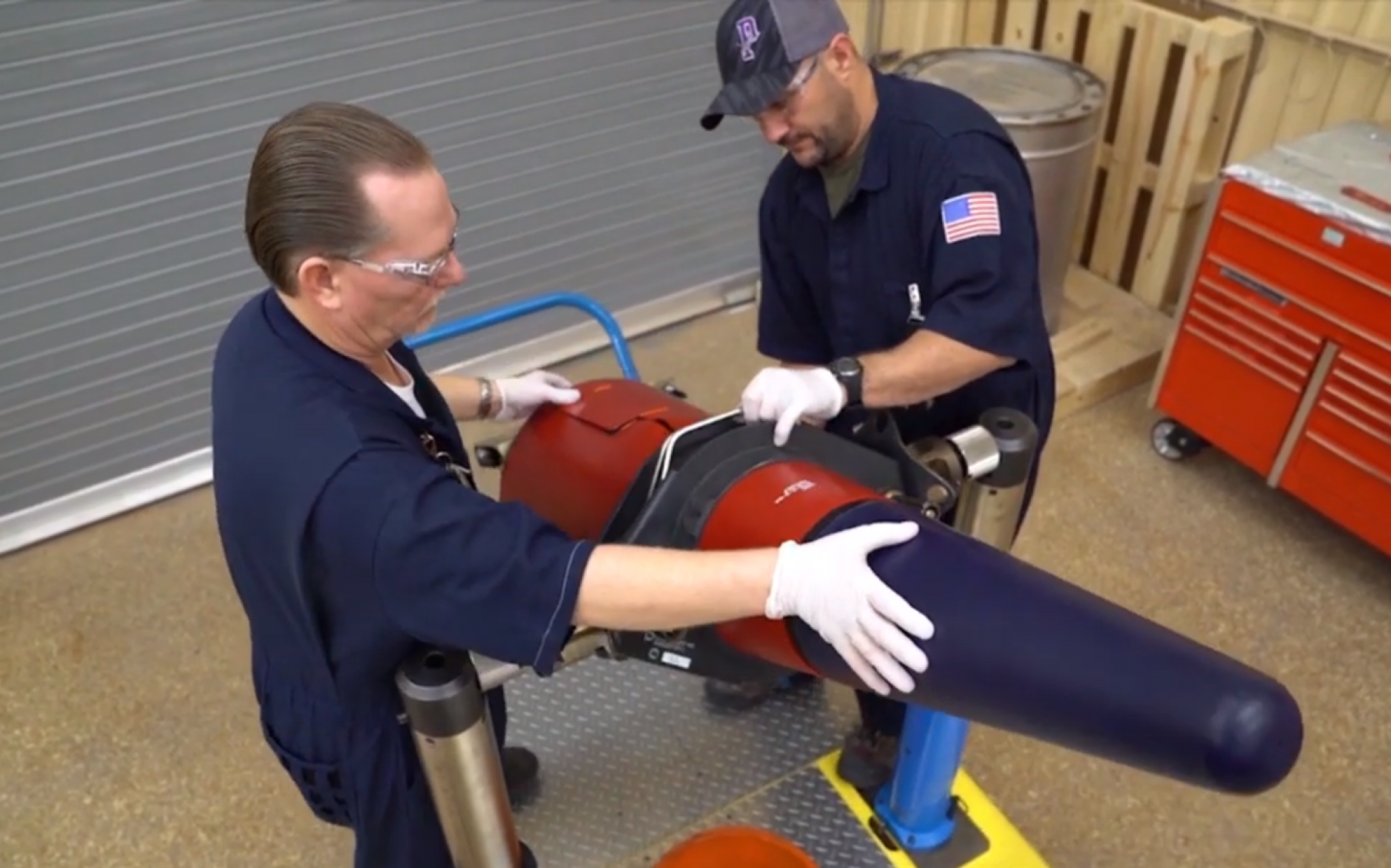
In the unintuitive world of nuclear weapons strategy, it’s often difficult to identify which decisions can serve to decrease the risk of a devastating nuclear conflict and which might instead increase it. Such complexity stems from the very foundation of the field: Nuclear weapons are widely seen as bombs built never to be used. Historically, granular—even seemingly mundane—decisions about force structure, research efforts, or communicated strategy have confounded planners, sometimes causing the opposite of the intended effect.
Such is the risk carried by one strategy change that has earned top billing under the Trump administration: the deployment of a new “low-yield” nuclear weapon on US submarines.
Low-yield, high risk. The Trump administration first announced its plans for a new low-yield nuclear warhead in its February 2018 Nuclear Posture Review, a public report meant to communicate and clarify various American nuclear weapons policies. The Nuclear Posture Review presented the lower-strength warhead as necessary for the “preservation of credible deterrence against regional aggression.” In other words, the United States was seeking a new, intermediate option for an imagined scenario in which Russia, after starting a conventional war in Europe, might be tempted to use smaller nuclear weapons first in order to win the conflict.
The Japanese Garden Reflects on Hiroshima Attack with Season-Opening Exhibit
Spirits Rising: ひろしま/hiroshima showcases objects left behind after U.S. forces bombed the city in 1945.
ARTICLE BY CONNER REED | pdxmonthly.com





I always wear kimonos to my opening receptions,” says Ishiuchi Miyako through a translator, clad in a brilliant purple garment stitched together from her grandparents’ kimonos.
Last Friday, Miyako opened Spirits Rising: ひろしま/hiroshima at the Portland Japanese Garden’s Pavilion Gallery. The exhibition features photographs from Miyako’s ひろしま/hiroshima series, which showcases personal objects left behind after American forces dropped nuclear bombs on Hiroshima and Nagasaki in 1945. When pieces from the series first premiered at the Andrew Roth Gallery in 2014, the New York Times said they “hold the eye and [don’t] easily let go.”
Large and haunting, the photographs appear without placards—Miyako offers no concrete information about the dresses and combs and dolls she’s compiled. Instead, viewers are left to imagine the objects’ histories. At first, it can be frustrating; you want to know the details of each life attached to each garment and trinket. Ultimately, it’s chilling: the more you wander, the greater the sense of annihilation becomes, until the whole space feels almost like a well-lit mass grave.
“Peace and international stability are incompatible with attempts to build upon the fear of mutual destruction, or the threat of total annihilation,”
In Nagasaki and Hiroshima, Pope Francis calls for abolishing nuclear weapons
2020 Doomsday Clock Announcement
Washington, D.C. • January 23, 2020
Closer than ever: It is 100 seconds to midnight
Humanity continues to face two simultaneous existential dangers—nuclear war and climate change—that are compounded by a threat multiplier, cyber-enabled information warfare, that undercuts society’s ability to respond. The international security situation is dire, not just because these threats exist, but because world leaders have allowed the international political infrastructure for managing them to erode.
In nuclear spending fight, it’s Trump allies vs. White House budget office
BY: AARON MEHTA & JOE GOULD | defensenews.com
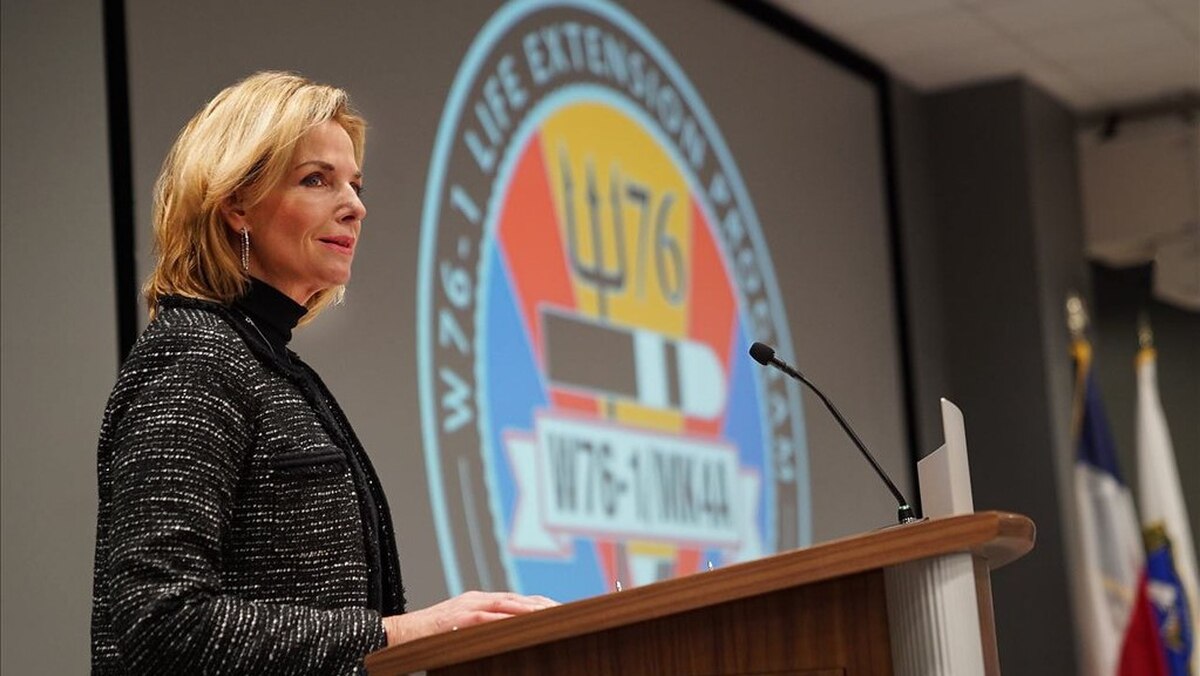
WASHINGTON — A new fight over America’s nuclear budget has erupted from behind the scenes, as key Republicans in Congress are appealing to President Donald Trump for a significant boost to the agency in charge of the nation’s nuclear warheads.
Though there are often disagreements as presidents vet their budgets on Capitol Hill before finalizing them, it’s rare that those fights become public. This time, some of the president’s allies in Congress are battling the White House’s Office of Management and Budget on behalf of the National Nuclear Security Administration, a semiautonomous agency inside the Department of Energy.
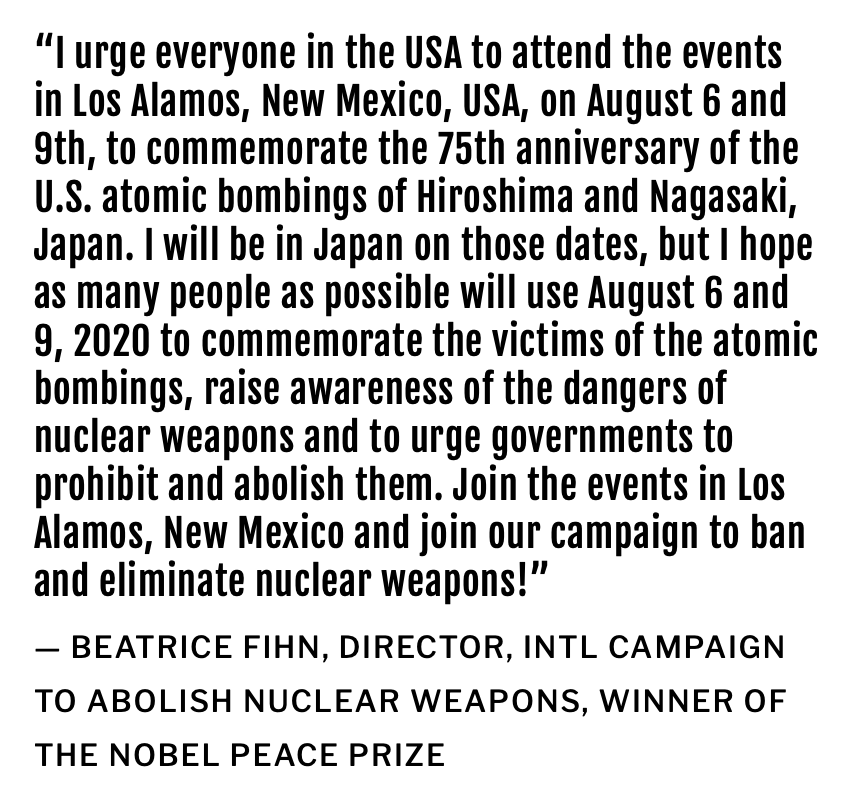
Feds say nuclear weapons work will be open
BY: SUSAN MONTOYA BRIAN / ASSOCIATED PRESS | abqjournal.com
A review of a proposal to ramp up production of key components for the United States’ nuclear arsenal will be open and transparent, according to members of New Mexico’s congressional delegation.
Sens. Tom Udall and Martin Heinrich and Rep. Ben Ray Luján said in a joint statement to The Associated Press that they received assurances from federal officials that the review process also will include an opportunity for public comment.
The Democrats were briefed last week by federal officials after the National Nuclear Security Administration announced it did not need to do a more expansive nationwide review of the impacts of building plutonium cores at federal installations in New Mexico and South Carolina.
As supporters of bringing more defense-related spending to New Mexico, the lawmakers initially refrained from commenting on whether they would support an expanded review, saying they needed more information. Watchdog groups have argued that federal officials are violating national environmental laws by not doing a more in-depth analysis.
A radioactive legacy haunts this Navajo village, which fears a fractured future
BY: WILL FORD | washingtonpost.com
RED WATER POND ROAD, N.M. — The village of Red Water Pond Road sits in the southeast corner of the Navajo Nation, a tiny speck in a dry valley surrounded by scrub-covered mesas. Many families have lived here for generations. The federal government wants to move them out.

In what might seem a cruel echo of history, officials are relocating residents to the city of Gallup, about a half-hour away, and surrounding areas. This echo is nuanced, however. The village sits amid a Superfund site loaded with uranium mine waste. Mitigation has been delayed for decades, along with remedies for hundreds of other abandoned uranium mines across the tribe’s lands that boomed during the Cold War.
No Plan to Consolidate Pit Mission at Single Site, But DoE Won’t Deny the Possibility
“…the pit issue has proved politically thorny since then, with Sens. Tom Udall (D-N.M.) and Martin Heinrich (D-N.M.) needling the agency over the last few budget cycles about the need to build a pit plant anywhere other than Los Alamos.”
BY: DAN LEONE | defensedaily.com
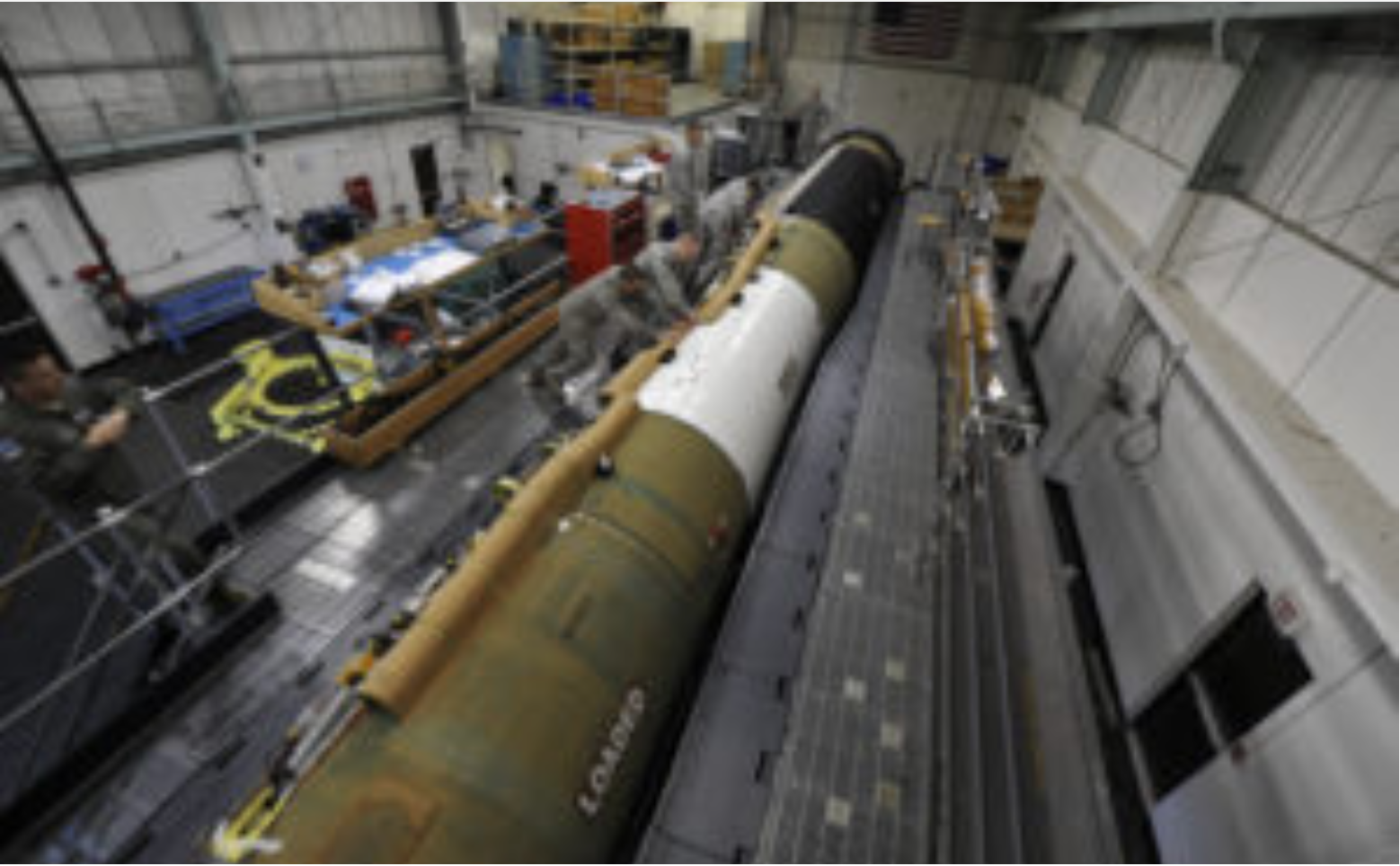
The head of the National Nuclear Security Administration (NNSA) would not rule out the possibility here Thursday that one of the agency’s two planned plutonium pit factories could independently supply all the fissile nuclear weapon cores initially required for planned refurbishments of U.S. nuclear weapons.
“[W]e are not looking at [using] one exclusive of the other,” Lisa Gordon-Hagerty, administrator of the National Nuclear Security Administration (NNSA), told sister publication Nuclear Security & Deterrence Monitor in a question-and-answer session during a breakfast hosted by area nonprofits the Mitchell Institute for Aerospace Studies and the Advanced Nuclear Weapons Alliance. “That is not our plan.”
In a 2020 budget bill signed before the holidays, Congress at last funded the first step in a plan the NNSA publicly announced in 2018: produce at least 80 plutonium pits a year starting in 2030 by upgrading an existing pit plant, the PF-4 Plutonium Facility at the Los Alamos National Lab, and converting the partially built Mixed Oxide Fuel Fabrication Facility at the Savannah River Site into a new pit plant called the Savannah River Plutonium Processing Facility (SRPPF).
SRPPF would get more than $400 million of the $710 million or so appropriated for the entire Plutonium Sustainment account. The NNSA is the semiautonomous Department of Energy agency in charge of U.S. nuclear weapons and materials.
NNSA Moves to Expand Plutonium Pit Production
The National Nuclear Security Administration said last week that it will proceed with a plan to sharply expand production of plutonium “pits” — the explosive triggers for thermonuclear weapons — without performing a full “programmatic” environmental review.
BY: STEVEN AFTERGOOD | fas.org Secrecy News
NNSA envisions producing “no fewer than 80 pits per year by 2030,” including a minimum of 30 pits per year at Los Alamos National Laboratory and a minimum of 50 pits per year at the Savannah River Site. Currently, “less than 20 per year” are produced, all at Los Alamos.
It is “NNSA’s determination that no further NEPA [National Environmental Policy Act] documentation at a programmatic level is required,” the agency said in a January 8 Federal Register notice. (Site-specific assessments will still be prepared for plutonium pit production at Los Alamos National Lab and the Savannah River Site.)
Environmental and anti-nuclear groups cried foul. “NNSA’s refusal to complete programmatic environmental review before plunging ahead with plans to more than quadruple the production authorization for plutonium bomb cores flies in the face of our country’s foundational environmental law, the National Environmental Policy Act, and a standing federal court order mandating that the government conduct such a review,” said Marylia Kelley of Tri-Valley CAREs.
U.S. lawmakers from NM hold out on review of nuke plan
The government isn’t going to “become conscious of the contradictions and interactions” of the numerous programs that would be involved unless it’s forced to prepare an environmental impact statement. Watchdogs [also] said the state needs to consider that the waste will need to be sent somewhere.
BY: SUSAN MONTOYA BRIAN / ASSOCIATED PRESS | abqjournal.com © Associated Press
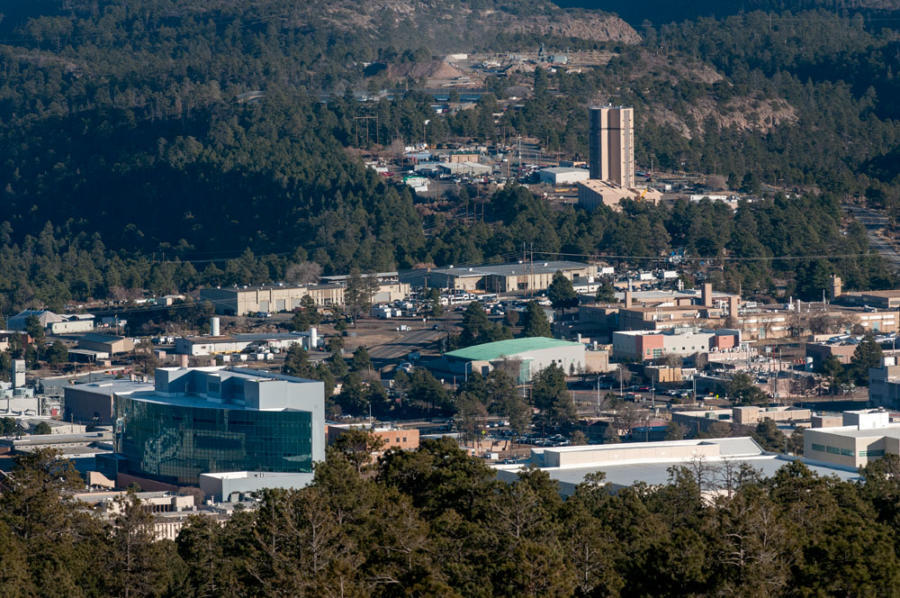
SANTA FE, N.M. — Members of New Mexico’s congressional delegation find themselves in an awkward position as watchdogs claim the U.S. government is skirting key environmental laws by refusing to closely examine the consequences of increasing production of key plutonium components for the nation’s nuclear arsenal.
The National Nuclear Security Administration, which oversees the nuclear arsenal, said last week that it doesn’t need to do any broad environmental reviews of the proposal. Watchdog groups say that’s a violation of law.
Why nuclear weapons should be a major focus of the 2020 campaign
ARTICLE BY JOHN MECKLIN | thebulletin.org
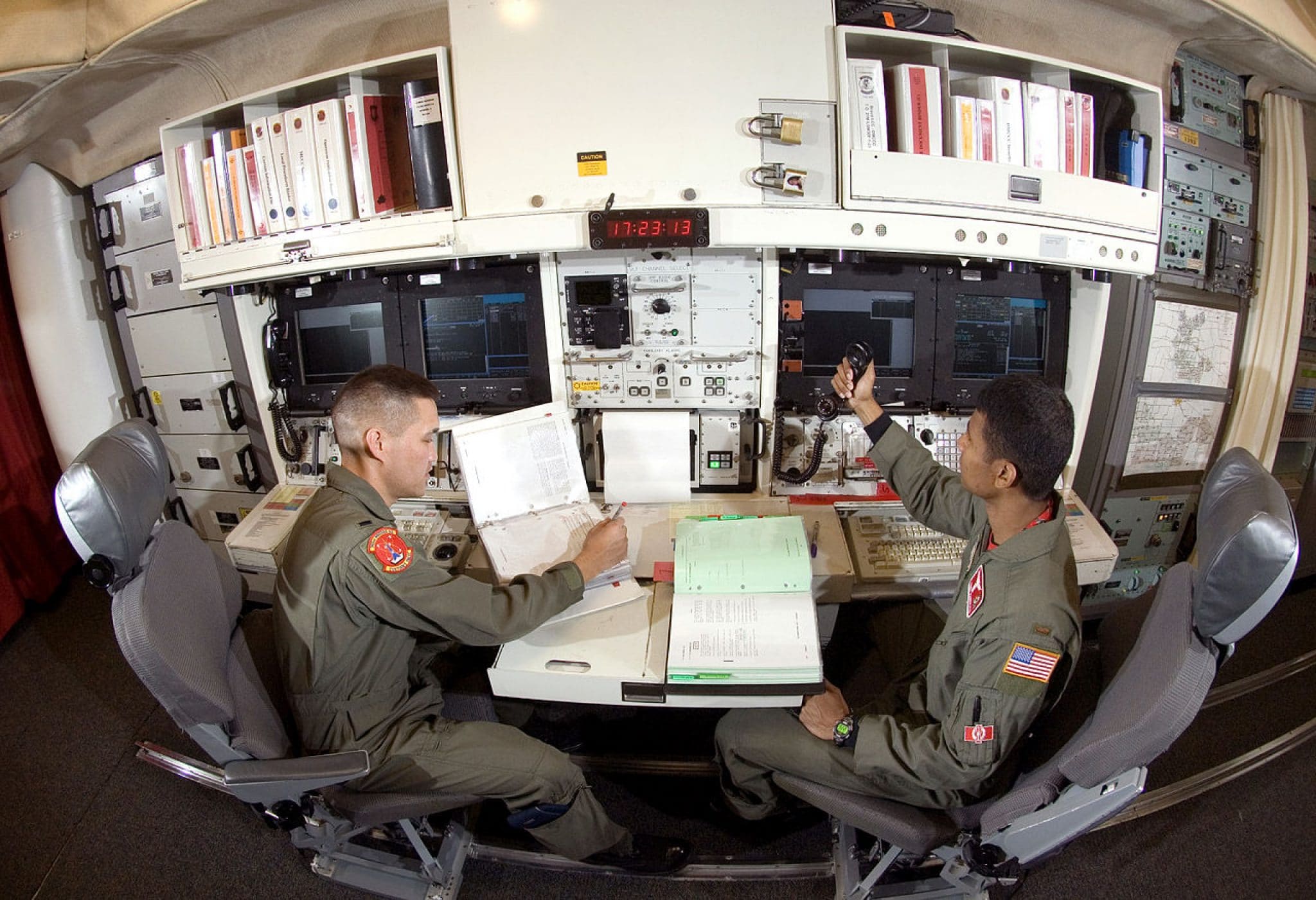
The proverbial alien beamed down to Earth would find the situation quizzical indeed: The political debates and campaigns involved in selecting the most powerful person on the planet – the US president – scarcely mention the stark fact that any president could at any time be called to decide, almost instantly, whether to order a nuclear attack that would lead to the end of civilization. There is, at present, no significant check on the president’s ability to make that decision. If he orders a nuclear attack, there will almost certainly be one. For a variety of reasons, the chances of nuclear war are not negligible; they are at least as high as they were at the height of the Cold War, according to leading world experts. And a nuclear exchange of even modest proportions would change the world forever, bringing on nuclear winter, degrading civilization in countless other ways, and affecting every person, everywhere. (At least every live person. The tens or hundreds of millions killed quickly in a nuclear exchange will just be dead.)
How Rising Temperatures Increase the Likelihood of Nuclear War
As climate changes stresses our human institutions, we are likely to face deadly conflicts over critical resources.
BY: MICHAEL T. KLARE | thenation.com © ![]()
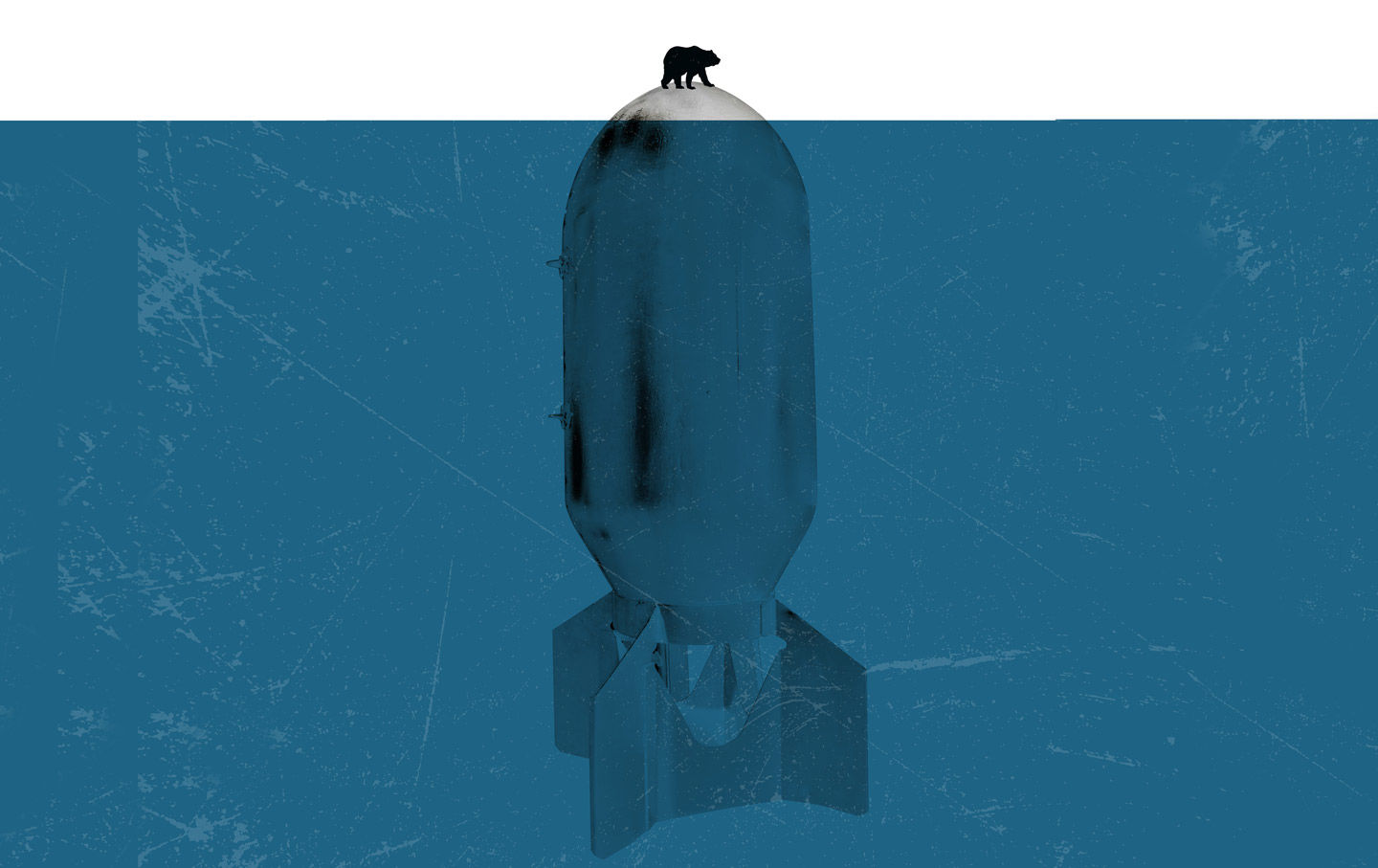
President Donald Trump may not accept the scientific reality of climate change, but the nation’s senior military leaders recognize that climate disruption is already underway, and they are planning extraordinary measures to prevent it from spiraling into nuclear war. One particularly worrisome scenario is if extreme drought and abnormal monsoon rains devastate agriculture and unleash social chaos in Pakistan, potentially creating an opening for radical Islamists aligned with elements of the armed forces to seize some of the country’s 150 or so nuclear weapons. To avert such a potentially cataclysmic development, the US Joint Special Operations Command has conducted exercises for infiltrating Pakistan and locating the country’s nuclear munitions.
As LANL jobs grow, housing issues worsen
ARTICLE BY MONICA ROMAN GAGNIER | abqjournal.com Copyright © 2020 Albuquerque Journal
Overheard at the Blake’s Lotaburger at the corner of Guadalupe Street and Paseo de Peralta in Santa Fe:
“What brings you back to New Mexico, dude?”
“I just got a great job at LANL, but I can’t find a place to live that I can afford.”
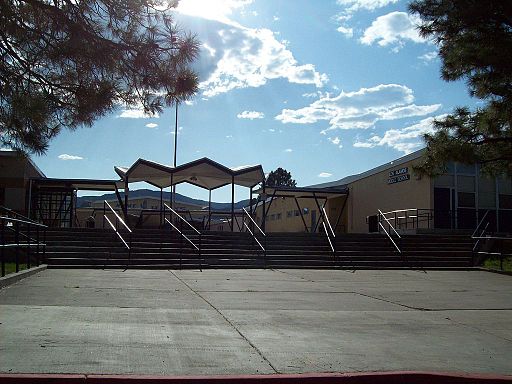 From fast-food joints to the chambers of local government to Realtors’ offices, everyone agrees: There’s a shortage of affordable, desirable housing in northern New Mexico to serve the growing workforces of places such as Los Alamos National Laboratories and Presbyterian Española Hospital.
From fast-food joints to the chambers of local government to Realtors’ offices, everyone agrees: There’s a shortage of affordable, desirable housing in northern New Mexico to serve the growing workforces of places such as Los Alamos National Laboratories and Presbyterian Española Hospital.
It’s a vexing problem in an area where families are reluctant to move after generations in the same house, there is a lack of new housing developments in key areas, and New Mexico pueblos have been asserting and winning claims over water rights and roads.
With a New Weapon in Donald Trump’s Hands, the Iran Crisis Risks Going Nuclear
“Regardless of presidencies, nuclear planning tends to have a life of its own…Iran is very much in the crosshair.” – Hans Kristensen
Nuclear planners operate from “relatively vague presidential guidance,” writing scenarios, conducting war games, and adjusting plans, weapons and the posture of forces to anticipate countless possible scenarios.
BY: WILLIAM ARKIN | newsweek.com
Ten days before Donald J. Trump was elected president in 2016, the United States nuked Iran. The occasion: a nuclear war exercise held every year in late October. In the war game, after Iran sank an American aircraft carrier and employed chemical weapons against a Marine Corps force, the Middle East commander requested a nuclear strike, and a pair of B-2 stealth bombers, each loaded with a single nuclear bomb, stood by while the president deliberated.

“Testing our forces through a range of challenging scenarios validates the safety, security, effectiveness and readiness of the strategic deterrent,” Adm. Cecil D. Haney, then the commander of U.S. Strategic Command, said as the exercise got underway.
DOE’s Nuclear Agency Moving to Manufacture New Plutonium Bomb Cores in Violation of Environmental Law and Court Order
Natural Resources Defense Council, Nuclear Watch New Mexico, SRS Watch, Tri-Valley CAREs Assert “Pit” Pursuit Violates National Environmental Policy Act (NEPA)
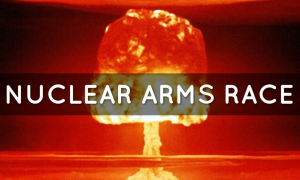
COLUMBIA, SC, USA, January 9, 2020 /EINPresswire.com/ — The Department of Energy’s semi-autonomous National Nuclear Security Administration (NNSA) has announced that it is proceeding with aggressive plans to expand the production of plutonium pits without required nation-wide “programmatic” public review. The Natural Resources Defense Council, Nuclear Watch New Mexico, Savannah River Site Watch and Tri-Valley CAREs assert this is in violation of the legal requirements of both the National Environmental Policy Act (NEPA) and a 1998 court order that stipulates that DOE must prepare a “programmatic environmental impact statement” (PEIS) when it plans to produce more than 80 pits per year. Plutonium pits are the radioactive cores of nuclear weapons.
Jay Coghlan of Nuclear Watch New Mexico concluded, “We need to find smart ways to face the world’s renewed nuclear arms race. Unnecessary expanded production of questionable plutonium bomb cores is not the way to do it. Instead of aggressively modifying nuclear weapons the U.S. should carefully preserve its existing, reliable, extensively tested nuclear weapons stockpile while working toward a future world free of them. It’s that kind of analysis and consideration of credible alternatives that the National Environmental Policy Act should give Americans instead of the nuclear weaponeers rubber stamping their self-interested agenda of nukes forever at the taxpayer’s expense.”
U.S. plutonium bomb core production ended in 1989 when the FBI raided the Rocky Flats Plant near Denver while investigating environmental crimes. In 1997, DOE relocated pit production to the Los Alamos National Laboratory (LANL) in New Mexico after completing the Stockpile Stewardship and Management Programmatic Environmental Impact Statement. Production was capped at 20 pits per year.
Watchdog Groups Claim Nuclear Agency is Moving Forward to Manufacture New Plutonium Bomb Cores in Violation of National Environmental Law and an Existing Court Order
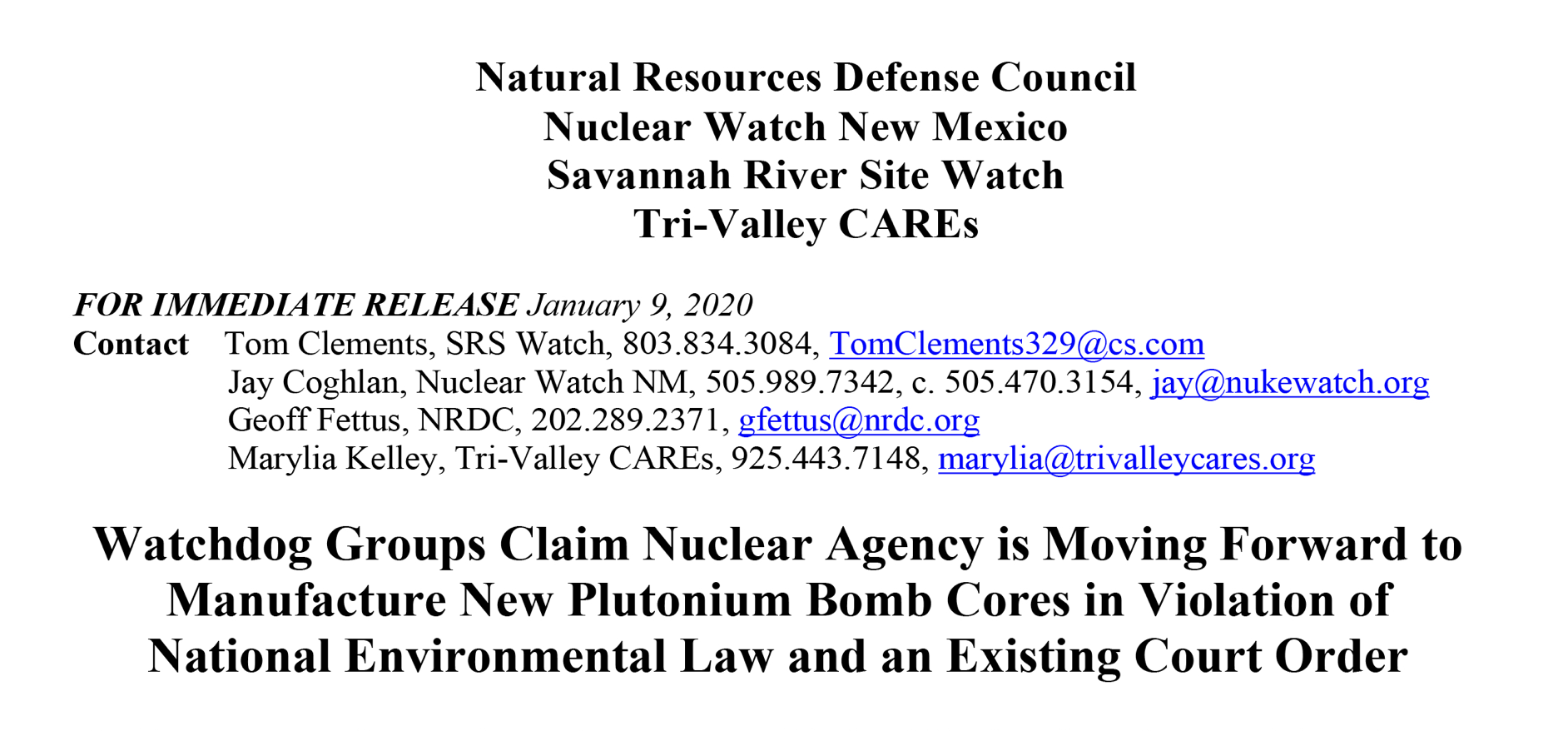 The Department of Energy’s semi-autonomous National Nuclear Security Administration (NNSA) has formally announced that it is proceeding with aggressive plans to expand the production of plutonium pits without required nation-wide “programmatic” public review. The Natural Resources Defense Council, Nuclear Watch New Mexico, Savannah River Site Watch and Tri-Valley CAREs assert this is in direct violation of the legal requirements of both the National Environmental Policy Act and a 1998 court order that stipulates that DOE must prepare a “programmatic environmental impact statement” (PEIS) when it plans to produce more than 80 pits per year. Plutonium pits are the radioactive cores or “triggers” of nuclear weapons.
The Department of Energy’s semi-autonomous National Nuclear Security Administration (NNSA) has formally announced that it is proceeding with aggressive plans to expand the production of plutonium pits without required nation-wide “programmatic” public review. The Natural Resources Defense Council, Nuclear Watch New Mexico, Savannah River Site Watch and Tri-Valley CAREs assert this is in direct violation of the legal requirements of both the National Environmental Policy Act and a 1998 court order that stipulates that DOE must prepare a “programmatic environmental impact statement” (PEIS) when it plans to produce more than 80 pits per year. Plutonium pits are the radioactive cores or “triggers” of nuclear weapons.
LANL waste cleanup agreement gets chilly reception
“The 2016 consent order should be jettisoned in its entirety,” said Jay Coghlan, executive director of Nuclear Watch New Mexico. “And the fundamental principle is the state should be in the driver’s seat and not DOE.”
To back up his argument, Coghlan read some of the order’s guidelines, such as letting the federal agency set its own cleanup targets according to its budgetary constraints.
BY: SCOTT WYLAND | santafenewmexican.com
LOS ALAMOS — While some people coolly suggested a list of procedural changes, others vented Thursday about a waste cleanup agreement they say cuts out the public and gives the U.S. Energy Department too much power to call the shots.
US plutonium production plan likely to spur legal challenge
Nuclear watchdogs, government accountability advocates and other critics argue that the decision skirts requirements of the National Environmental Policy Act and a decades-old court order that included a mandate for an environmental review when the federal government embarked on plans to boost production to more than 80 of the nuclear cores a year.
BY: SUSAN MONTOYA BRYAN | apnews.com – washingtonpost.com Copyright 2020 The Associated Press

ALBUQUERQUE, N.M. — The agency that oversees the United States’ nuclear arsenal says it doesn’t need to do any broad environmental reviews of a proposal that calls for ramping up production of plutonium triggers at federal installations in New Mexico and South Carolina.
The National Nuclear Security Administration on Wednesday released a supplemental analysis related to the project, saying the determination was made after reviewing extensive documentation and public comments that were received last year.
A key component of every nuclear weapon, most of the plutonium cores in the stockpile were produced in the 1970s and 1980s, according to the nuclear agency.
Nuclear watchdogs, government accountability advocates and other critics argue that the decision skirts requirements of the National Environmental Policy Act and a decades-old court order that included a mandate for an environmental review when the federal government embarked on plans to boost production to more than 80 of the nuclear cores a year.
“It’s in everyone’s interest to carefully, and most of all publicly, assess whether it’s a good idea to aggressively expand the manufacturing of key components of nuclear weapons,”
— Geoff Fettus, Senior Attorney at National Resources Defense Council (NRDC)
NNSA: No new programmatic environment study needed for plutonium pit production at LANL
NNSA: No new programmatic environment study needed for plutonium pit production at LANL
“NNSA’s refusal to complete programmatic environmental review before plunging ahead with plans to more than quadruple the production authorization for plutonium bomb cores flies in the face of our country’s foundational environmental law, the National Environmental Policy Act, and a standing federal court order mandating that the government conduct such a review,” – Marylia Kelley, executive director of Tri-Valley CARES
BY: KENDRA CHAMBERLAIN | nmpoliticalreport.com
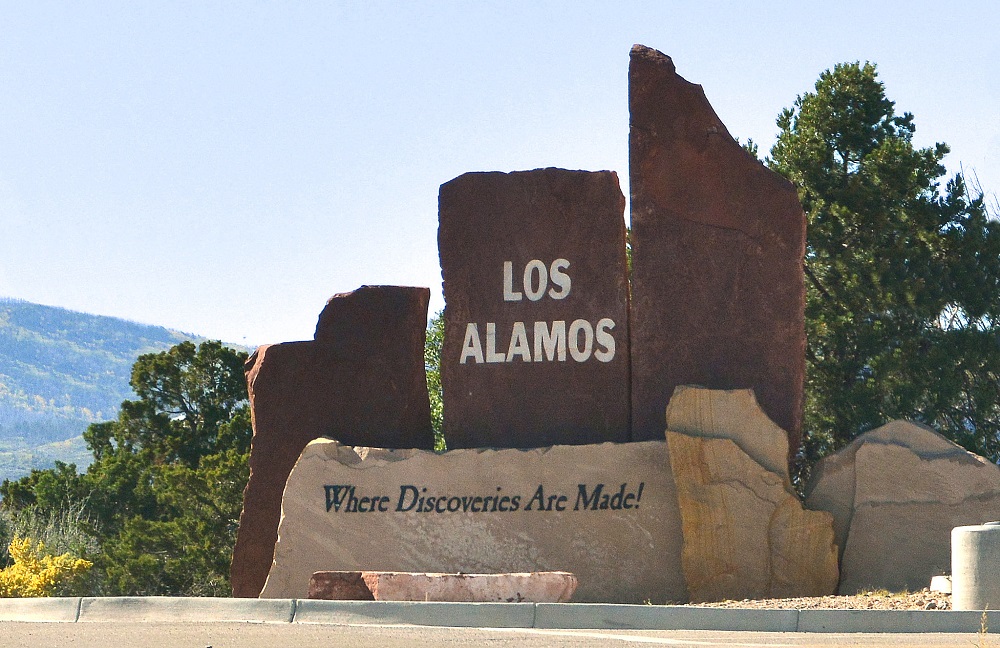
The Department of Energy’s National Nuclear Security Administration (NNSA) will not complete a programmatic study for environmental impacts of increased plutonium pit production at Los Alamos National Labs (LANL) and one other lab located in South Carolina. The decision to not do so drew criticism from Nuclear Watch NM and other groups, who argue such assessments are required by law under the National Environmental Policy Act (NEPA) and an existing court order.
Plutonium pits are the radioactive cores of nuclear warheads where the chemical reactions occur that cause the warhead to detonate. The U.S. made thousands of cores during the Cold War, but pit production has all but stopped in the last thirty years.
Now, the federal government is getting ready to ramp up pit production in order to modernize the U.S. nuclear arsenal and “assure the nation has a safe, secure and credible deterrent,” said Lisa Gordon-Hagerty, the Department of Energy Under Secretary for Nuclear Security and the NNSA Administrator, in a statement. The 2018 Nuclear Posture Review calls for at least 80 plutonium pits to be produced per year by 2030, with a target of 30 pits produced annually at LANL and 50 pits produced annually at Savannah River Site.
The Dubious Moral Justification for a Nuclear Second Strike
The aim of presenting the case for the continued possession of these terrifying weapons that hold the potential to destroy all life on earth this way seems to be to convince citizens that nuclear weapons are morally justifiable and thus somehow ‘acceptable.’
ARTICLE BY GERARD BOYCE | commondreams.org

Poised as the nuclear powers appear to be to resume the nuclear arms race, leaders of these countries have been at pains to assure their countrymen and the rest of the world that, though determined to maintain and even expand their nuclear arsenals, they will only use them for the purposes of a second strike i.e. in retaliation to a nuclear first strike by a nuclear-armed belligerent. Their pledges are meant to reassure us that nuclear weapons are for defensive rather than offensive purposes. The aim of presenting the case for the continued possession of these terrifying weapons that hold the potential to destroy all life on earth this way seems to be to convince citizens that nuclear weapons are morally justifiable and thus somehow ‘acceptable’. For a number of reasons, however, a second strike may not be as morally defensible as leaders would have us believe.
2019
Extracts From the Area G Corrective Measures Evaluation Report
The Corrective Measures Evaluation Report for Material Disposal Area G, Consolidated Unit 54-013(b)-99, at Technical Area 54, Revision 3 was released in September 2011. It’s document numbers are ERID-206324, LA-UR-11-4910, and EP2011-0284. This is the document where LANL states its preference to leave the one million cubic meters of radioactive and hazardous waste buried in place at the Lab at Area G.
The full document is available at LANL’s Electronic Reading Room site (download doc)
http://permalink.lanl.gov/object/tr?what=info:lanl-repo/eprr/ERID-206324
WARNING It is 153MB! (If you have trouble downloading the full document from the LANL site, which is often the case, please get in touch with us at [email protected]
To help make things a bit more accessible and manageable, NukeWatch is providing outtakes from the Area G Corrective Measures Evaluation Report:
Continue reading
Women’s Equality Day 2019: Diversity Encourages Innovation

nuclear diplomacy needs more women
“Negotiating successfully requires having the best people, regardless of gender, and recognizing that diversity enhances innovation.”
The story of women in nuclear security reflects many of the broader lessons we’ve learned about gender and politics: that women’s contributions have often been ignored or excluded, risking policies that lack key perspectives, nuance and debate. With today’s high stakes, we need national security policy that includes all of the best ideas. New and lasting solutions require diversity of representation and experience if we’re to solve the issues surrounding humanity’s survival.
https://www.washingtonpost.com/outlook/2019/05/23/why-nuclear-diplomacy-needs-more-women/
Arms Control Association: #ThisWeek in Nuclear History: The Soviet Union detonated its first nuclear weapon on August 29, 1949 at Semipalatinsk in the Soviet republic of Kazakhstan. Tests continued at the site until 1989 with little regard for their effect on the local people or environment. After the Soviet Union’s collapse in 1991, tests ended at the site and it was officially closed on Aug 29, 1991. The International Day against Nuclear Tests is now observed annually on August 29.
Trump Wanted to Nuke Hurricanes to Stop Them From Hitting U.S. Coast: Report
“I got it. I got it. Why don’t we nuke them?” [Trump said] according to one source who was there.

BY MATT STIEB | nymag.com August 26, 2019
The president’s understanding of the natural world isn’t particularly deep. He thinks that the noise from wind turbines causes cancer. He’s called climate change a hoax and thinks that cold weather in the winter disproves global warming. He might not get how rivers work, and he definitely doesn’t understand how to stop a forest fire: Last year, he suggested a proper raking could have stalled the disastrous Camp Fire, which killed 83 Californians.
How Congress Can Prevent a Meltdown of Global Nuclear Arms Control
The end of the INF Treaty was a mistake but building new low-yield nukes and leaving New START would be disastrous.
BY TOM COUNTRYMAN & LAURA KENNEDY | nationalinterest.org
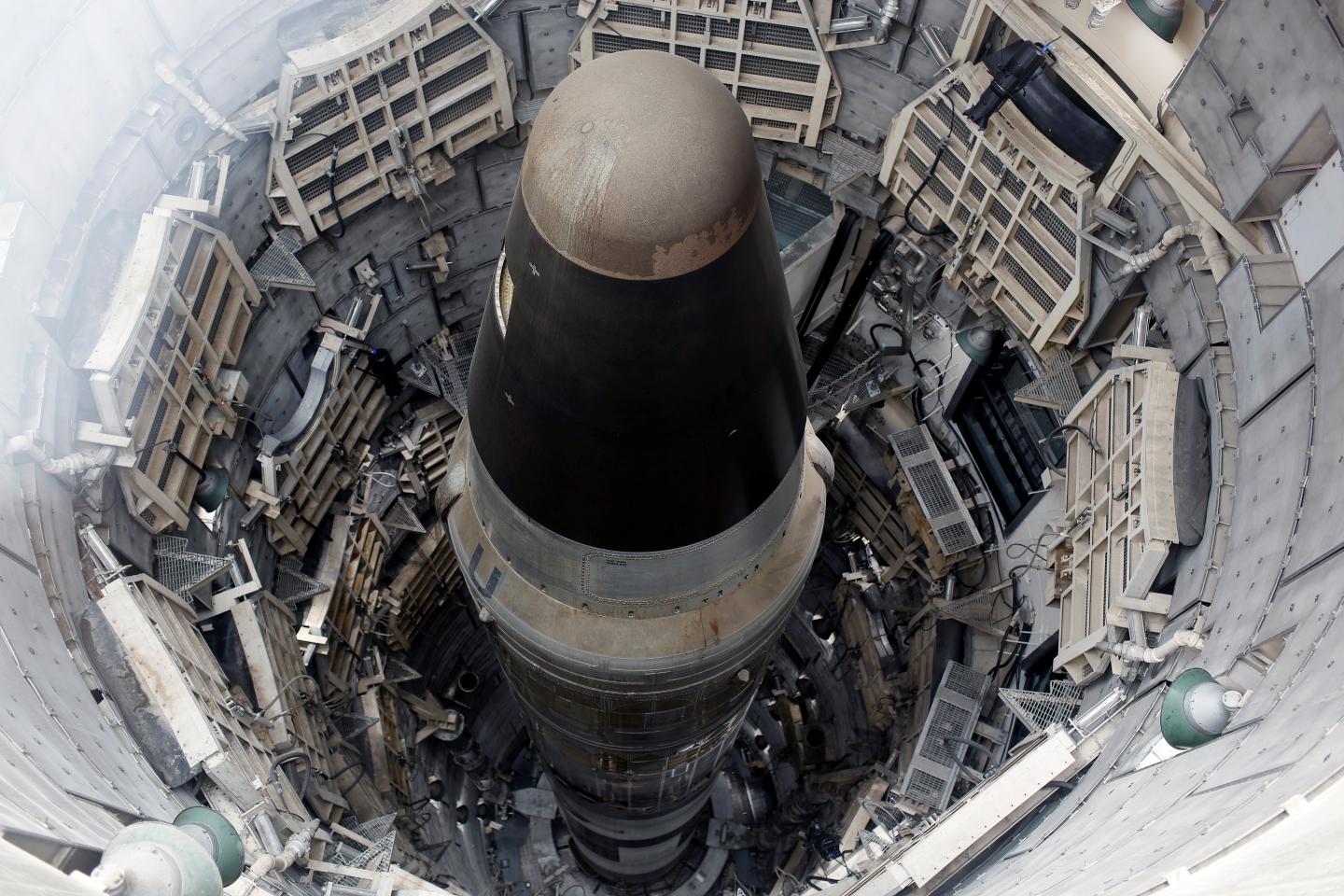
The Trump administration’s nuclear weapons policy has eroded decades of agreed-upon norms. An important arms control agreement with Russia was already shredded, and another is on the brink of being abandoned. Instead of adhering to its commitments under the Nuclear Non-Proliferation Treaty (NPT), which calls for good-faith steps towards the ultimate goal of nuclear disarmament, the Trump administration’s Nuclear Posture Review (NPR) released last year called for, among other things, new “low-yield” nuclear weapons that are considered likely to lower the nuclear threshold. Fortunately, Congress now has an opportunity to push back on these damaging departures from long-standing policies that have so far prevented nuclear annihilation.
House and Senate negotiators will soon meet to begin reconciling major differences in their versions of the Fiscal Year 2020 National Defense Authorization Act (NDAA). Among the many issues that must be addressed, that of nuclear weapons is poised to be one of the most controversial.
August 27 Lynn Rusten of the Nuclear Threat Initiative (NTI), sits down with Joe Cirincione to discuss the history of arms control between the United States and Russia, and how the Trump administration’s actions have put the New START treaty in danger.
Michelle Dover hosts Early Warning with Roger L. Hale Fellow Catherine Killough and Matt Korda, Research Associate at the Federation of American Scientists. Also, Michelle Dover and Joe Cirincione answer a question from Henry about US-North Korea relations.
Listen, Subscribe and Share on iTunes · Spotify · SoundCloud · YouTube · Google Play · Sticher
Also available on ploughshares.org/pressthebutton
Total eclipse: Nuclear power regulation slips deeper into the shadows
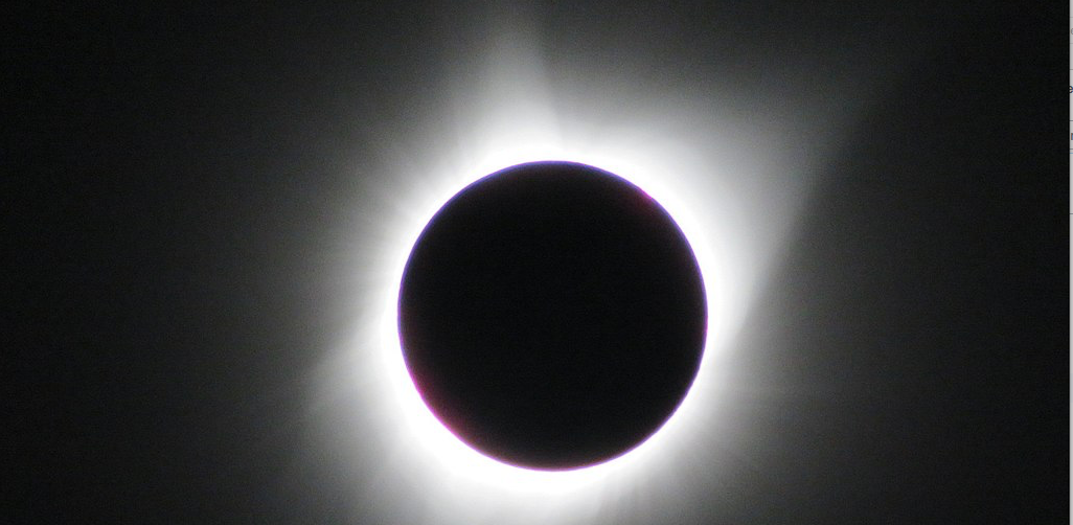
BY PAUL GUNTER | beyondnuclearinternational.org
On July 17, 2019, the United States Nuclear Regulatory Commission (NRC) held its regularly scheduled information exchange meeting with the nuclear industry’s Institute for Nuclear Power Operations (INPO) at NRC Headquarters in Rockville, Maryland.
INPO is a secretive industry task force headquartered in Atlanta, Georgia, led by the nation’s senior nuclear utility executives. Industry watchdogs often refer to INPO as “the shadow regulator” of the U.S. atomic power industry.
It is significant that NRC management chose this brief hour-long meeting in July with INPO to make a public announcement that the nation’s federal regulatory agency is proposing to dramatically cut back its “Regulatory Oversight Process” in what is being called a “transformative process.”
The Waste that Remains
Los Alamos Labs hit with $222,313 fine for safety violations. Meanwhile, clean-up of legacy sites may permanently seal waste in the ground.
BY LEAH CANTOR | sfreporter.com
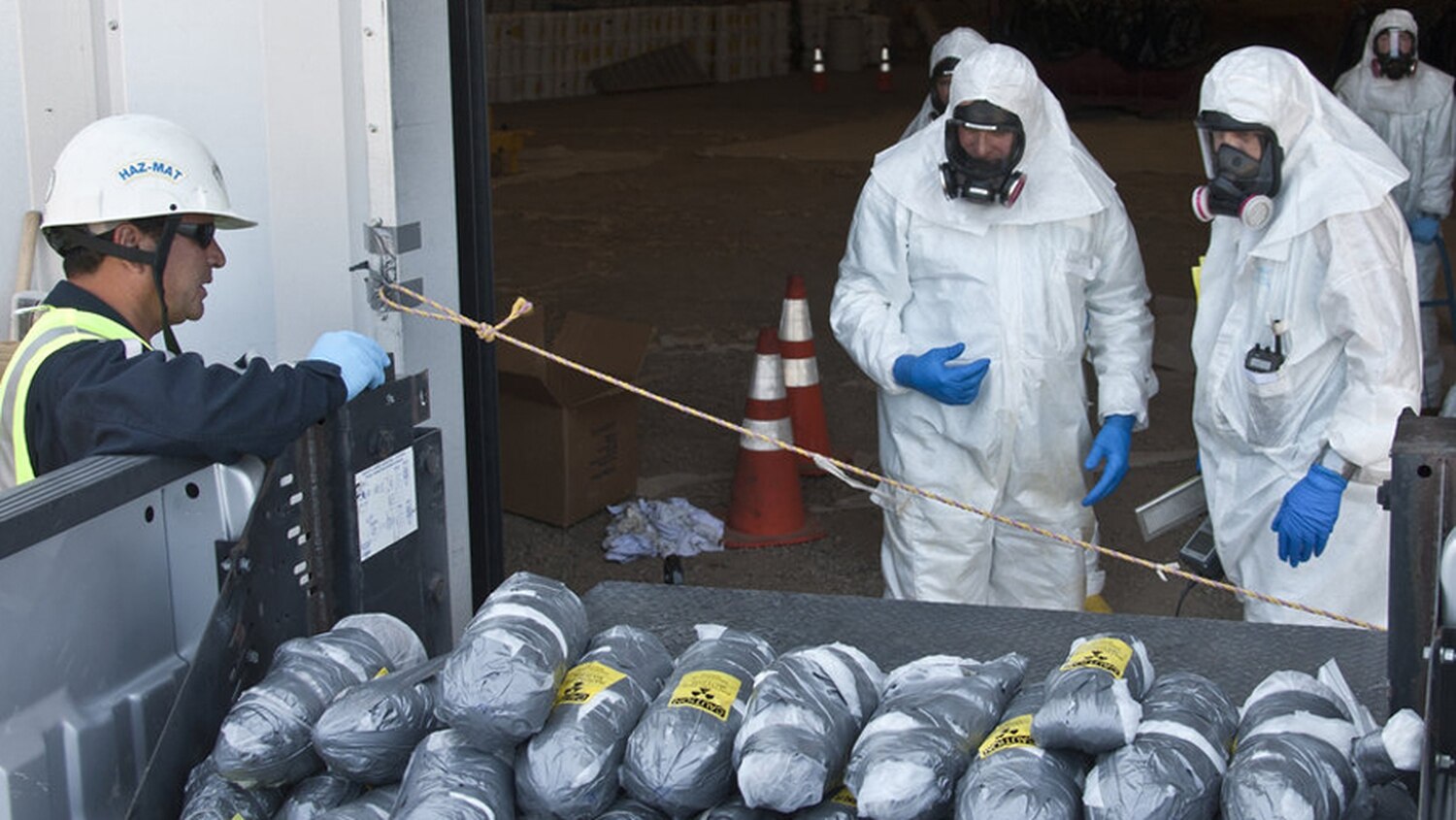
Even as Los Alamos National Labs takes on contracts for new weapons manufacturing, taxpayers are still shelling out for the clean-up costs of contamination dating back to atomic bomb testing. The latest clean-up proposals will likely leave hazardous waste in the ground. Meanwhile, recent hazardous waste safety violations add up to $222,313.
N3B, the company recently contracted by the US Department of Energy to complete a significant portion of remaining clean-up efforts, gave a presentation to the public at the Santa Fe Community College on Thursday as part of a series of community meetings leading up to the process to decide methods for cleaning up several contaminated legacy waste sites around LANL.
…The DOE reported that 1,168 of 2,123 contaminated sites have been cleaned and 10,000 cubic meters of radioactive waste removed, leaving 5,000 cubic meters of waste remaining identified for clean-up. Yet, according to watchdog group Nuke Watch New Mexico, that leaves 690,251 cubic meters of waste permanently buried on-sight in unlined pits and shafts above a regional aquifer that provides drinking water for San Ildefonso Pueblo, Española, Los Alamos and Santa Fe, among other communities. Nuke Watch Executive Director Jay Coghlan tells SFR this number is from analysis of publicly available LANL documents and data.
2018
Draft Nuclear Posture Review Degrades National Security
Yesterday evening the Huffington Post posted a leaked draft of the Trump Administration’s Nuclear Posture Review (NPR). This review is the federal government’s highest unclassified nuclear weapons policy document, and the first since the Obama Administration’s April 2010 NPR.
This Review begins with “[m]any hoped conditions had been set for deep reductions in global nuclear arsenals, and, perhaps, for their elimination. These aspirations have not been realized. America’s strategic competitors have not followed our example. The world is more dangerous, not less.” The NPR then points to Russia and China’s ongoing nuclear weapons modernization programs and North Korea’s “nuclear provocations.” It concludes, “We must look reality in the eye and see the world as it is, not as we wish it be.”
If the United States government were to really “look reality in the eye and see the world as it is”, it would recognize that it is failing miserably to lead the world toward the abolition of the only class of weapons that is a true existential threat to our country. As an obvious historic matter, the U.S. is the first and only country to use nuclear weapons. Since WWII the U.S. has threatened to use nuclear weapons in the Korean and Viet Nam wars, and on many other occasions.
Further, it is hypocritical to point to Russia and China’s “modernization” programs as if they are taking place in a vacuum. The U.S. has been upgrading its nuclear arsenal all along. In the last few years our country has embarked on a $1.7 trillion modernization program to completely rebuild its nuclear weapons production complex and all three legs of its nuclear triad.
Moreover, Russia and China’s modernization programs are driven in large part by their perceived need to preserve strategic stability and deterrence by having the ability to overwhelm the U.S.’ growing ballistic missile defenses. Ronald Reagan’s pursuit of “Star Wars” (fed by the Lawrence Livermore National Laboratory’s false promises of success) blocked a nuclear weapons abolition agreement in 1988 with the soon-to-collapse Soviet Union. In 2002 George W. Bush unilaterally withdrew the U.S. from the Anti-Ballistic Missile Treaty, which has been a source of constant friction with the Russian government ever since.
More recently, at Israel’s request, the U.S. blocked the 2015 NonProliferation Treaty (NPT) Review Conference at the United Nations from agreeing to an international conference on a nuclear weapons free zone in the Middle East (Israel, an undeclared nuclear weapons power, has never signed the NPT). As an overarching matter, the U.S. and other nuclear-armed NPT signatories have never honored the Treaty’s Article VI mandate “to pursue negotiations in good faith on effective measures relating to cessation of the nuclear arms race at an early date and to nuclear disarmament…”, in effect since 1970. As a consequence, last year more than 120 countries at the UN passed a nuclear weapons ban treaty which the U.S. vehemently denounced, despite the fact that there have long been ban treaties on chemical and biological weapons which the U.S. has not only supported but also sought to enforce.[1]
With respect to North Korea’s nuclear provocations, that repressive regime is clearly seeking deterrence against the U.S. (North Korea’s infrastructure was nearly completely destroyed during the Korean War, and it witnessed the destruction of the Iraqi regime that did not have nuclear weapons). The bombastic statements of “fire and fury” and who has the bigger “nuclear button” from two unpredictable heads of state (Trump and Kim Jong Un) have put the entire world on edge, given the highest chance of nuclear war since the mid-1980’s.
Finally, the Nuclear Posture Review purports to be all about “deterrence” against hostile threats. However, the U.S’ true nuclear posture has never been just deterrence, but rather the ability to wage nuclear war, including possible preemptive first strikes. This is the reason why the U.S. (and Russia) keep thousands of nuclear weapons instead of the few hundred needed for just deterrence.[2] And keeping and improving the ability to wage a nuclear war is the underlying reason for the $1.7 trillion “modernization” program that is giving nuclear weapons new military capabilities, instead of prudently maintaining a few hundred existing nuclear weapons.
In addition to fully preserving and improving the enormous land, sea and air-based Triad, the new NPR calls for:
1) Near-term development of a low-yield nuclear warhead for existing Trident missiles launched from new strategic submarines.
2) New sub-launched nuclear-armed cruise missiles.
3) Keeping the 1.2 megaton B83-1 nuclear gravity bomb “until a suitable replacement is identified.”
4) “Provid[ing] the enduring capability and capacity to produce plutonium pits at a rate of no fewer than 80 pits per year by 2030.”
5) “Advancing the W78 warhead replacement to FY19… and investigating the feasibility of fielding the nuclear explosives package in a Navy flight vehicle.”
Obvious problems are:
1) An adversary won’t know whether a Trident sub-launched nuclear warhead is a new low-yield or an existing high-yield warhead. In any event, any belief in a “limited’ nuclear war is a fallacy that shouldn’t be tested – – once the nuclear threshold is crossed at any level, it is crossed, and lower-yield nuclear weapons are all the more dangerous for being potentially more usable.
2) Sub-launched nuclear-armed cruise missiles are inherently destabilizing as the proverbial “bolt out of the blue,” and can be the perfect weapon for a nuclear first-strike. Moreover, this is redundant to nuclear-armed cruise missiles that are already being developed for heavy bombers.
3) The National Nuclear Security Administration largely justified the ongoing program to create the B61-12 (the world’s first “smart” nuclear gravity bomb) by being a replacement for the 1.2 megaton B83-1 bomb. Does this indicate doubts in the ~$13 billion B61-12 program? And will it lead to a bump up in the number of nuclear weapons in the U.S.’ arsenal?
4) To date, the talk has been up to 80 pits per year, not “no fewer than.” Also, the 2015 Defense Authorization Act required that the capability to produce up to 80 pits per year be demonstrated by 2027. The NPR’s later date of 2030 could be indicative of longstanding plutonium pit production problems at the Los Alamos National Laboratory. That delay and hints of higher than 80 pits per year could also point to the pit production mission being relocated to the Savannah River Site, which is under active consideration. In any event, future plutonium pit production pit production is not needed for the existing nuclear weapons stockpile, but is instead for future new-design nuclear weapons.
5) “W78 warhead replacement… in a Navy flight vehicle” is code for so-called Interoperable Warheads, whose planned three versions together could cost around $50 billion. These are arguably huge make work projects for the nuclear weapons labs (particularly Livermore), which ironically the Navy doesn’t even want.[3] It is also the driving reason for unnecessary future production of more than 80 pits per year.
Jay Coghlan of Nuclear Watch commented,
“This Nuclear Posture Review does not even begin to meet our long-term need to eliminate the one class of weapons of mass destruction that can truly destroy our country. It will instead set back nonproliferation and arms control efforts across the globe, and further hollow out our country by diverting yet more huge sums of money to the usual fat defense contractors at the expense of public education, environmental protection, natural disaster recovery, etc. Under the Trump Administration, expect medicare and social security to be attacked to help pay for a false sense of military security, and this Nuclear Posture Review is part and parcel of that.”
# #
[1] Since then the U.S. has reportedly used strong arm tactics to discourage individual countries from ratifying the nuclear weapons ban treaty. See http://www.businessinsider.com/mattis-threatened-sweden-over-a-nuclear-weapons-ban-treaty-2017-9
[2] This was explicitly stated in a Department of Defense follow-on to the 2010 Nuclear Posture Review (NPR). It states: “The new guidance requires the United States to maintain significant counterforce capabilities against potential adversaries. The new guidance does not rely on a “counter-value’ or “minimum deterrence” strategy.”
Report on Nuclear Implementation Strategy of the United States Specified in Section 491 of 10. U.S.C., Department of Defense, June 2013, page 4 (quotation marks in the original), http://www.globalsecurity.org/wmd/library/policy/dod/us-nuclear-employment-strategy.pdf
[3] See https://nukewatch.org/importantdocs/resources/Navy-Memo-W87W88.pdf
Draft Nuclear Posture Review Degrades National Security
Santa Fe, NM
Yesterday evening the Huffington Post posted a leaked draft of the Trump Administration’s Nuclear Posture Review (NPR). This review is the federal government’s highest unclassified nuclear weapons policy document, and the first since the Obama Administration’s April 2010 NPR.
This Review begins with “Many hoped conditions had been set for deep reductions in global nuclear arsenals, and, perhaps, for their elimination. These aspirations have not been realized. America’s strategic competitors have not followed our example. The world is more dangerous, not less.” The NPR then points to Russia and China’s ongoing nuclear weapons modernization programs and North Korea’s “nuclear provocations.” It concludes, “We must look reality in the eye and see the world as it is, not as we wish it be.”
If the United States government were to really “look reality in the eye and see the world as it is”, it would recognize that it is failing miserably to lead the world toward the abolition of the only class of weapons that is a true existential threat to our country. As an obvious historic matter, the U.S. is the first and only country to use nuclear weapons. Since WWII the U.S. has threatened to use nuclear weapons in the Korean and Viet Nam wars, and on many other occasions.
Further, it is hypocritical to point to Russia and China’s “modernization” programs as if they are taking place in a vacuum. The U.S. has been upgrading its nuclear arsenal all along. In the last few years our country has embarked on a $1.7 trillion modernization program to completely rebuild its nuclear weapons production complex and all three legs of its nuclear triad.
DPRK Develops its Nukes For The Same Reason We Keep Ours: Deterrence
We often hear these days that the North Korean nuclear weapons program is a failure of deterrence. It is not. DPRK’s nuke forces were developed for the same reasons ours exist: to deter another state from attacking it. (In particular, the US.) DPRK’s program is a confirmation of the concept of deterrence.
The concept of deterrence means a state has nuclear weapons so other states dare not attack. As such all states might aspire to develop a deterrent. Our ‘deterrence’ was never meant to prevent states form going nuclear, only to prevent them from attacking us.
Preventing other states from going nuclear was the purpose of the 1968 Non-Proliferation Treaty. The NPT deal was that non-nuclear weapons states would abstain from developing nuclear arsenals in exchange for a promise from the nuclear weapons states to negotiate in good faith to achieve genuine reductions and eventual abolition of nuclear arsenals. The nuclear weapons states have not done that. They still have 15000 nukes. That is the failure.
DPRK’s nuclear development isn’t down to a failure of deterrence but rather a failure of the nuclear weapons states to abide in good faith by the Non-Proliferation Treaty.
NM Senator Martin Heinrich Letter to Sec.Def. Mattis Warning Against “Bloody Nose” Attack on North Korea
“Massive gamble”, “risk of mass casualties and utter devastation”… Urges diplomatic efforts…
2017
Nothing Found
It seems we can’t find what you’re looking for. Perhaps searching can help.
2016
Nothing Found
It seems we can’t find what you’re looking for. Perhaps searching can help.
2015
Nothing Found
It seems we can’t find what you’re looking for. Perhaps searching can help.

